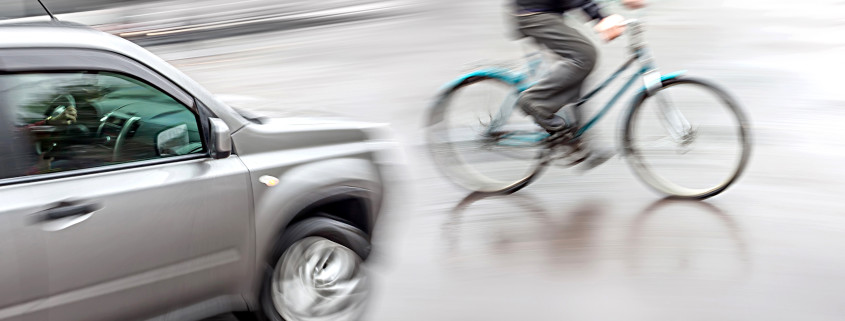Bicycle Safety: Learn to Bike Defensively
When Tom purchased a new bike, he decided to do some research about bicycle safety. He wanted to learn about the top causes of bicycle accidents.
Sometime later, while riding his new bicycle in the bike lane of a busy, downtown street, Tom noticed a vehicle approaching from a side street. He kept his attention focused on three things—traffic behind him, traffic ahead of him, and the vehicle approaching from the right. Tom assumed the driver was not going to come to a full stop at the stop sign, but instead would pull out in front of him.
In researching bicycle safety, Tom was prepared for what most people would consider the unthinkable. His newly acquired safety awareness prompted him to slow down and swerve to the right just in time to avoid a collision. But he didn’t escape completely unharmed–Tom’s bike slammed into a concrete block and he flew through the air, landing on his back.
Although the driver did as Tom had anticipated, he didn’t need an explanation from the driver to understand what had likely just happened.
By keeping an eye on the street behind him, Tom had noticed there was a break in traffic. Tom guessed the driver was impatient and might decide to make a right turn before another wave of traffic could cause him a delay, which is exactly what happened.
The driver accelerated and quickly pulled onto the street, running the stop sign and cutting off the approaching bicyclist.
Tucson Bicycle Accident Statistics
According to Tucson Bicycle Crash Database, the top intersections for bicycle accidents are Grant and Alvernon and Grant and Mountain. The intersections at 22nd Street and Kolb Road and First Avenue and Ft. Lowell Road are tied for second most dangerous for cyclists. The worst time of day for bicycle accidents are during rush hour, between the hours of 3 and 6 p.m.
TBCD reports that in Tucson, the following are the most common types of bicycle/vehicle collisions:
23% – Right-turning vehicle with a bicyclist riding on the wrong side of the street;
17% – Bicyclist and vehicle colliding in an intersection;
13.4% – Left-hook where a motorist makes a left turn at an intersection and does not see the approaching bicyclist;
12.6% – Right-hook where the motorist makes a right turn directly in front of the bicyclist.
To learn more about the most frequent types of bicycle accidents in Tucson, visit Tucson Bicycle Crash Database.
Pima County Bicycle and Pedestrian Program
The Pima County Bicycle and Pedestrian Program, launched to promote bicycle use and safety, offers free bicycle training, support and equipment to local residents.
During November and December the program will be offering free bicycle classes:
UA Area Bike Ride Nov 9 and Dec 1
Get Back on Your Bike Nov 14 and Dec 19
Mountain Bike Classes Nov 7
Traffic Skills 101 Two-part classes starting Nov 10
Traffic Skills 101 for Women Dec 10 and Dec 12
To help people who are new to bicycling or need a refresher to become more confident bike riders, the Bike Buddy Program offers one-on-one support and training with experienced bicycle instructors.
For more information or to sign up for the free bicycle classes or the Bike Buddy program, call 520-724-2453.








